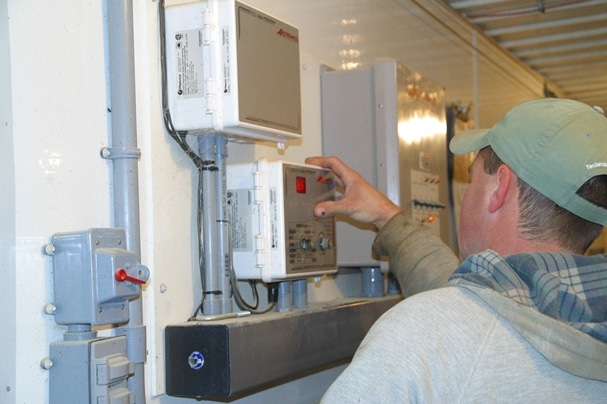January 27, 2014

With the recent spike in propane prices, it’s never too soon to start conserving heating energy. Pork producers may have propane contracted at a reasonable rate but managing heating costs should always be a priority, especially when expenses are rising.
“Often the first idea for saving heating fuel in hog buildings is to add insulation,” said Jay Harmon, professor in Ag and Biosystems Engineering at Iowa State University. “However, ventilation management should actually come first because more than 80% of the heat loss in a swine building is due to improper ventilation.” Harmon offers these tips for conserving propane this winter.
See Related Story: Propane Shortage Challenges Pork Producers.
Proper ventilation rate: The goal during colder months is to control moisture and ammonia as much as possible. Underventilating a building will result in poor air quality and may cause health and growth problems with pigs. Conversely, overventilating by just 20% can increase propane usage by 50%. In some cases, especially in wean-to-finish buildings, minimum ventilation fans may be too large, too many fans are used or the percent speed setting may be too high. If overventilation is occurring and you are using two fans for minimum ventilation, try turning off one fan and running the remaining one at a higher speed. Monitor air quality to be sure you are providing enough air. The percentage shown in the controller is likely not the percentage of fan capacity so it may take time to find the appropriate setting.
Adjust the temperature: The proper temperature is important for energy efficiency. Observe the pigs to determine their comfort level. If pigs are too cold, they will huddle and pile up when resting. If they’re too warm, they will avoid each other. Adjust the temperature so pigs sleep side by side but not in a pile. Just a few degrees difference can save a substantial amount of propane.
Adjust the heater: The controller should be adjusted so that minimum ventilation fan speed never increases while the heater is cycling. If the heater runs and then shuts down and you can hear a fan increase its speed, it means that the heater is shutting off too close to the setpoint. If you hear this happening, simply adjust the heater to shut off at a slightly lower temperature. In the case of one producer, it was documented that setting the heater to shut off one-half degree lower saved 3.75 gallons of LP per furnace per day.
Adjust the ventilation when using brooders: Some producers use brooders for small pigs. This allows them to keep the room cool, but the pigs feel warmer due to localized heating. If the setpoint is low—70 degrees, for instance—extra fans may switch on to maintain this cool temperature in the room. A better approach is to set the room setpoint just above the brooder temperature—85 degrees, for example—but to have your heater turn off at a lower temperature, such as 70 degrees. By preventing fans from cycling too early, this technique retains more heat in the building rather than discarding it through the ventilation system.
Seal leaks: Air leaks such as holes in ventilation curtains, leaky fan louvers or cracks around doors may create cold spots which cause heaters to run longer than necessary. Eliminate these and other leaks to maintain air quality and to reduce propane consumption.
Keep the most in-depth pork production information available at your fingertips! Download our Blueprint app today.
Iowa State University Extension and Outreach offers ventilation workshops for swine producers to help them master these and other ventilation management concepts. If you are interested in learning more about upcoming workshops or in scheduling a workshop for a group, contact your local ISU Extension swine specialist or email Jay Harmon at [email protected]. Please visit farmenergy.exnet.iastate.edu for a free PDF copy of “Managing swine ventilation controller settings to save energy” and for more information about conserving propane all around the farmstead.
You might also like:
It’s All About PEDV in Pork Producer Circles
You May Also Like



